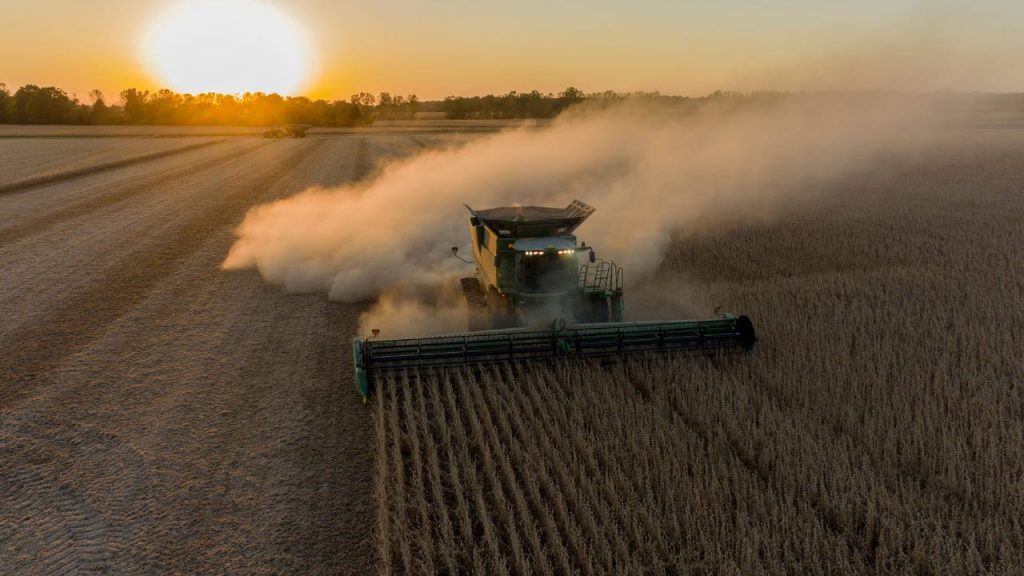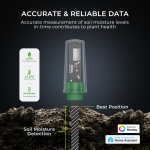Are you looking to enhance your agricultural practices and boost your farm’s productivity? If so, focusing on harvest residue management might just be the game-changer you need.
Managing residue effectively not only improves soil health but also maximizes crop yield, ensuring your hard work pays off. Imagine transforming leftover plant material into a powerful tool that nurtures your land and fosters growth. This article will guide you through the best practices for harvest residue management, offering insights and strategies that are simple to implement and incredibly effective.
You’ll discover techniques that can elevate your farming approach and lead to sustainable success. Dive in, and see how small changes can lead to big results in your farming journey.

Importance Of Harvest Residue Management
Harvest residue management plays a critical role in sustainable farming. Managing residues effectively enhances soil health and crop productivity. It reduces waste and supports a balanced ecosystem.
Residue management involves handling leftover plant materials after harvest. This includes stalks, leaves, and other organic matter. Proper management of these materials benefits both soil and crops.
Understanding Soil Health
Residues add organic matter to the soil. This improves soil structure and fertility. Healthy soil supports plant growth and nutrient absorption. It also enhances water retention and reduces erosion.
Boosting Crop Productivity
Residues provide essential nutrients for plants. They break down and release nitrogen, phosphorus, and potassium. These nutrients are vital for plant growth. Effective management ensures crops get these nutrients.
Supporting Biodiversity
Residues create habitats for various organisms. They support insects, earthworms, and microbes. These organisms contribute to nutrient cycling. They also improve soil structure and fertility.
Reducing Environmental Impact
Proper residue management lowers environmental risks. It reduces the need for chemical fertilizers. This minimizes pollution and enhances sustainability. It promotes eco-friendly farming practices.
Enhancing Water Conservation
Residues help retain soil moisture. They form a protective layer on the soil surface. This reduces evaporation and improves water efficiency. It is crucial in areas with limited water resources.

Effective Techniques For Residue Handling
Efficient harvest residue management enhances soil health and crop yield. Techniques like mulching and composting recycle nutrients, improving fertility. Regular monitoring helps adapt practices for environmental changes, ensuring sustainable farming.
Managing harvest residue effectively is crucial for maintaining soil health and enhancing crop yields. Residue handling involves several techniques that can optimize the decomposition process and improve nutrient availability. These methods not only benefit your crops but also contribute to sustainable farming practices.1. Shredding And Chopping Residue
Chopping residue into smaller pieces speeds up decomposition. It increases the surface area for microbial action. You can use a flail mower or a shredder for this task. Smaller pieces are easier to mix into the soil, enhancing nutrient cycling.2. Timely Incorporation Into Soil
Incorporating residue soon after harvest prevents nutrient loss. It also reduces pest attraction. Use a plow or disc harrow to mix residue into the soil. This action helps maintain soil moisture and reduces erosion.3. Cover Crops For Residue Management
Planting cover crops can boost soil health by improving residue breakdown. They act as a natural bio-stimulant for decomposition. Rye or clover can be excellent choices for cover crops. They add organic matter and help suppress weeds.4. Mulching Techniques
Mulching retains moisture and promotes residue decomposition. Organic mulch like straw or wood chips can be used. It protects the soil surface and improves nutrient retention. Mulching also aids in temperature regulation, providing a favorable environment for microbes.5. Monitoring Moisture Levels
Moisture is essential for residue breakdown. Regularly check soil moisture levels to ensure optimal conditions. Too much moisture can lead to anaerobic conditions, whereas too little can slow decomposition. Moisture sensors can help maintain balance.6. Balancing Carbon To Nitrogen Ratio
A balanced carbon to nitrogen ratio accelerates decomposition. High carbon materials need nitrogen-rich counterparts for efficient breakdown. Consider adding green manure or compost. This balance ensures that microbes have the nutrients they need.7. Avoiding Excessive Tillage
While tillage helps incorporate residue, excessive tillage can harm soil structure. It can lead to compaction and erosion. Use minimal tillage practices to protect the soil. This approach maintains the organic matter and promotes healthy microbial activity. Managing residue effectively requires a mix of techniques and timely actions. What strategies do you currently use, and how can you improve them? Engage with these practices to boost your farm’s productivity and sustainability.Sustainable Practices For Soil Health
Efficient harvest residue management improves soil health by enriching it with nutrients. Farmers can mulch or compost residues. These practices enhance soil structure, prevent erosion, and support sustainable agriculture. Healthy soil leads to better crop yields and reduces the need for chemical fertilizers.
Sustainable practices for soil health are crucial in modern farming. As a farmer or gardener, you know that maintaining soil health is the foundation of a successful harvest. By managing harvest residue effectively, you can boost soil fertility and ensure long-term productivity. But how can you achieve this sustainably while protecting the environment? Engaging with the right practices can make all the difference. Let’s explore some actionable strategies that can transform your approach to soil health. ###Minimize Soil Disturbance
Reducing tillage is a powerful way to preserve soil structure. When you avoid excessive plowing, you protect vital organisms living beneath the surface. These organisms enhance nutrient cycling and improve soil aeration. Think of it as letting nature do the heavy lifting. Instead of turning over the soil, leave crop residues on the field to decompose naturally. This practice not only saves time but also contributes to carbon sequestration in the soil. ###Cover Cropping
Planting cover crops can be a game-changer for soil health. These crops, such as clover or rye, grow during the off-season and provide ground cover. They prevent soil erosion and suppress weed growth. Moreover, cover crops add organic matter to the soil. This boosts soil fertility and moisture retention. Have you ever noticed how your garden thrives after a cover crop season? That’s the magic of sustainable soil health practices. ###Maintain Crop Diversity
Diversifying your crops is more than just a trend. It’s a sustainable practice that enriches soil health. By rotating different crops each season, you disrupt pest cycles and reduce disease risk. This approach also improves nutrient availability. Different plants contribute various nutrients back to the soil. So, what crops will you rotate next season to enhance your soil’s resilience? ###Residue Mulching
Consider using residue mulching to protect your soil. By spreading crop residues like straw or leaves over the soil surface, you shield it from harsh weather. This simple act reduces water evaporation and keeps soil temperature stable. Residue mulching also feeds the soil as it breaks down. It’s a small effort with big rewards for sustainable soil management. Have you tried this method on your farm? The results might surprise you. ###Compost Integration
Composting is a fantastic way to recycle organic waste. By turning kitchen scraps and plant debris into compost, you enrich your soil with nutrients. It’s a sustainable solution that reduces waste and enhances soil structure. When you mix compost into your fields, you boost microbial activity. This leads to healthier plants and higher yields. Are you ready to harness the power of compost for your soil health? Exploring these practices can transform your soil management strategy. By focusing on sustainability, you not only improve soil health but also protect the environment. Which practice will you implement today to make a lasting impact on your soil’s vitality?
Expert Tips For Optimal Residue Use
Managing harvest residue efficiently can boost soil health and crop yield. Proper residue use enriches the soil, controls erosion, and improves water retention. Here are expert tips to help farmers make the most of their residue. These tips ensure sustainable and productive farming practices.
Identify Your Soil Type
Different soils react differently to residue. Sandy soils benefit from residue cover. Clay soils may need less residue. Knowing your soil type helps in planning residue management.
Determine Residue Amount
Measure the residue left after harvest. Too much residue can hinder seed planting. Too little may expose soil to erosion. Aim for a balanced amount.
Choose The Right Tools
Use tools that suit your residue type. Disks and plows work well for heavy residue. Light residue might only need a harrow. The right tool ensures efficient residue management.
Consider Crop Rotation
Crop rotation impacts residue breakdown. Rotating crops improves nutrient recycling. It also reduces pest and disease risks. Plan rotations to optimize residue use.
Monitor Decomposition Rate
Check how quickly residue breaks down. Fast decomposition may need residue addition. Slow decomposition might require less residue. Adjust practices based on decomposition rates.
Incorporate Cover Crops
Cover crops enhance residue benefits. They add organic matter and protect soil. Choose cover crops that complement your main crops. This improves soil structure and fertility.
Conclusion
Harvest residue management is vital for healthy soil. Good practices boost crop growth and protect the environment. These steps help farmers and the planet. Small changes make big impacts. Reduce waste and improve efficiency. Save resources and time. Manage residues wisely for better yields.
Promote sustainability and protect future harvests. Always aim for balance between use and conservation. Encourage learning and sharing among communities. Everyone benefits from smart residue practices. Keep exploring new methods. Stay informed and adapt to changes. The journey to better management is ongoing.
Make each season better than the last.



